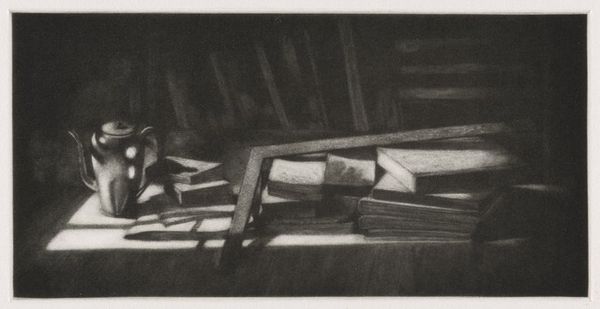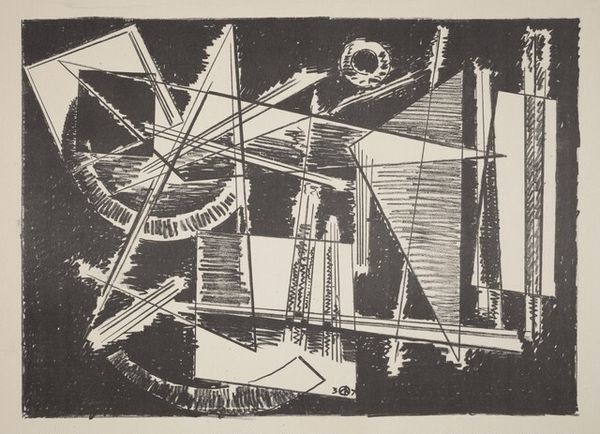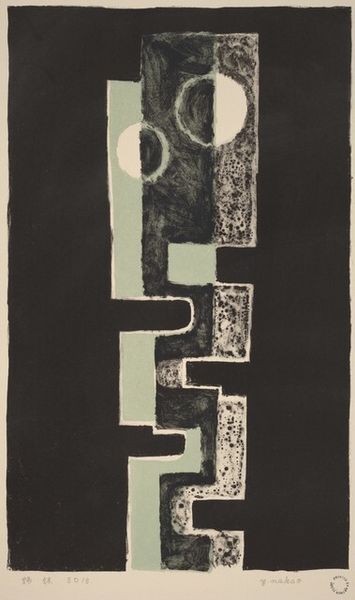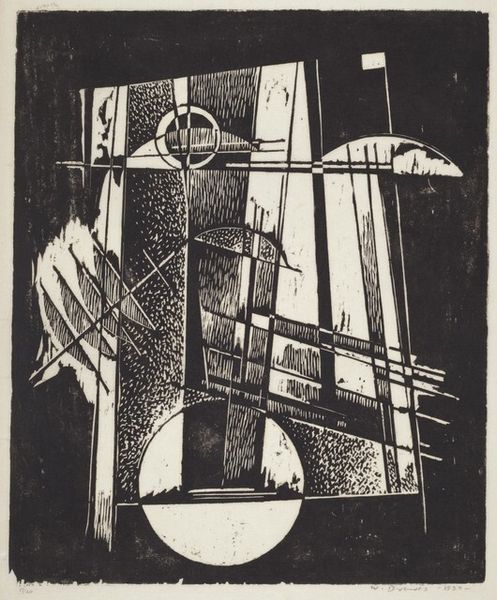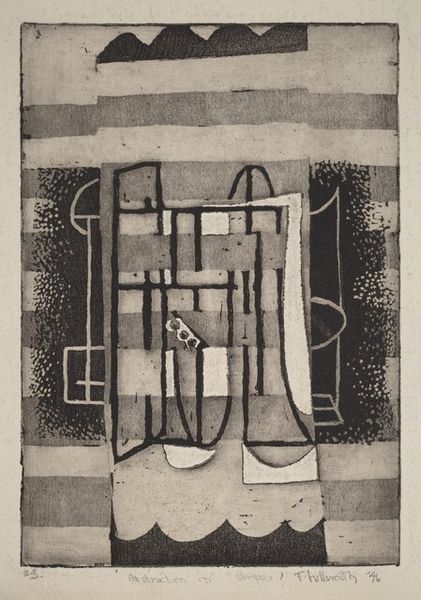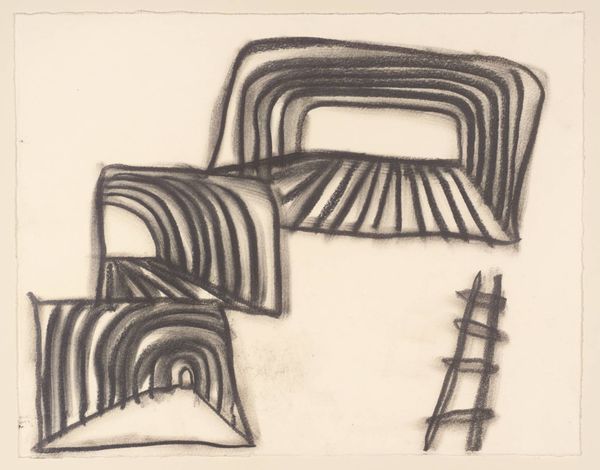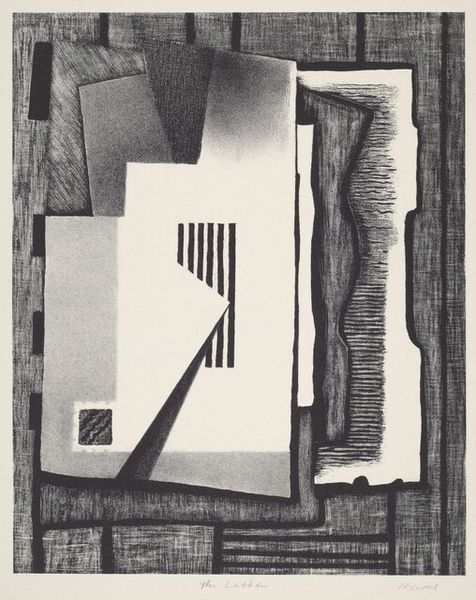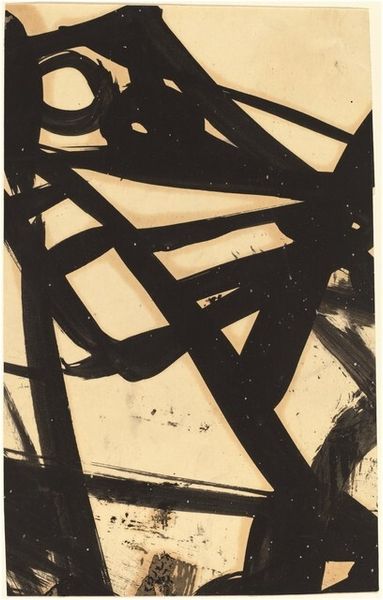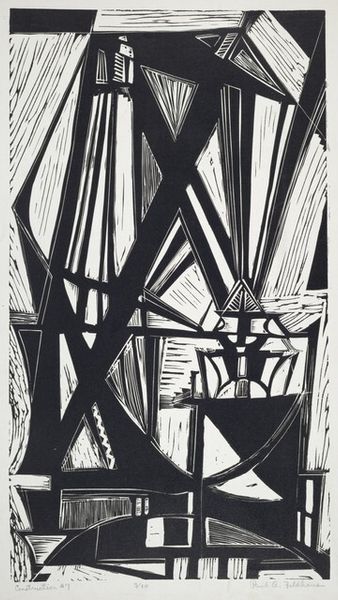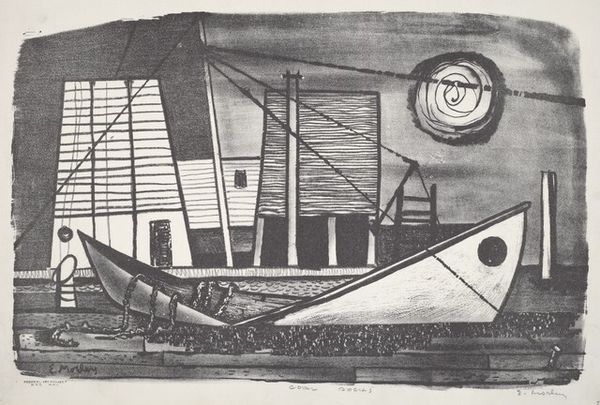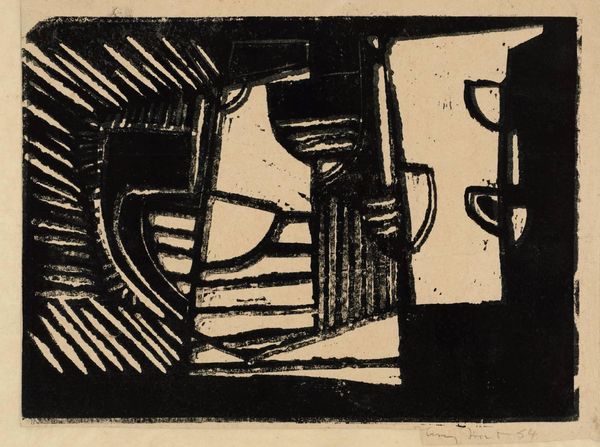
Dimensions: image: 15.2 × 26 cm (6 × 10 1/4 in.) sheet: 191 × 27.9 cm (75 3/16 × 11 in.)
Copyright: National Gallery of Art: CC0 1.0
Curator: At first glance, it’s a rather jarring piece. Stark black and white contrasts, unsettling geometry… it’s all a bit disorienting. Editor: Indeed. We’re looking at Werner Drewes’ "It Can't Happen Here Distorted Swastika," created as a woodcut print in 1934. The German-American artist, associated with the Bauhaus movement and later German Expressionism, was deeply concerned about the rise of fascism in Europe. This work is a powerful example of art as political commentary. Curator: A twisted take on the symbol of hate. The fractured and fragmented rendering robs it of its intended power, rendering it unstable. I'd add it also almost appears to be mocked by that strange circle face it is positioned around, as if its something absurd. The sharp lines further add to that sense of discordance. Even the horizontal grain emphasizes the unease; it feels like something being torn apart. Editor: Absolutely. The distortion is key, speaking to the fragility of reason and the perversion of symbols when adopted by ideologies of oppression. It’s a visual deconstruction, mirroring the way Nazi ideology corrupted existing social structures and cultural meanings. The artist aimed to make tangible something horrific. Curator: Considering Drewes's own biography, the print is imbued with more emotional depth. Having directly fled Germany, Drewes not only criticized from a distance, but processed that cultural trauma. Editor: And consider the title, "It Can't Happen Here"—a statement laced with both hope and a grim awareness of potential catastrophe. The phrase itself takes on new resonance each time such horrors threaten to repeat themselves. The print itself thus functions as both historical document and warning. Curator: A potent reminder of how easily societies can succumb to hateful ideologies. Seeing this "distorted swastika" then reminds us, as history repeats, that even in our current times that, once again, "It can happen here". Editor: Well, looking at its form, I see how abstraction becomes a crucial language to communicate those difficult ideas and dangerous emotions. In subverting established symbols like the swastika and then coupling it with expressionist and constructivist traditions, he communicates an incredibly deep emotional point.
Comments
No comments
Be the first to comment and join the conversation on the ultimate creative platform.
